
Oh, bed bugs! Is there anything nastier?
Once those little devils that thrive in fabric enter your home, there’s no more sleeping for you!
And, as you are thinking about how to get rid of them, among many other treatments, a quick fix would be to use your vacuum cleaner.
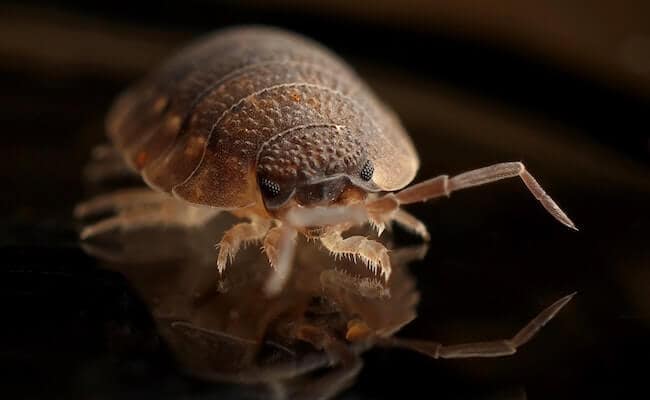
Having said that, let me ask you this – do you know bed bugs can live in your vacuum cleaner AND do you know how to clean your machine after you’ve vacuumed all these critters and their eggs?
“In my broad experience, the most effective method to sanitize your vacuum cleaner after a bed bug infestation is a thorough scrubbing, followed by heat treatment. This approach kills any stowaway bugs or their eggs that might skim the cleaning. Trust on this; I’ve seen countless homes regain their bug-free status with stringent cleaning habits.”
Oliver Iverson, Entomologist Specialist
1. Empty It
We are all aware that bed bug infestation is a serious thing and that bed bug control consists of many different steps. It is estimated that 3 out of 4 houses will have a bed bug problem at some point.
To clean a vacuum cleaner that has been infected with bed bugs first you have to remove the bag, spray pesticide, apply heat treatment with steam and wash the bag.
So, if we are discussing low levels of bed bug infestation, then vacuuming bed bugs might be the easiest thing to do.
However, getting rid of bed bugs like this will cause an additional issue for you and that is cleaning the vacuum cleaner.
If you don’t clean your vacuum properly, you might face a whole new infestation, and repeated vacuuming may not do the trick. Unfortunately, vacuum bags can become a breeding ground for bed bugs, much like how fleas can thrive in bagless vacuums. These pests thrive in dark and humid places, making vacuum bags an ideal environment.
So, one simple step you can do is just empty the cleaner. So, either it’s a bagless vacuum or the type with the bag you can empty it as you usually would.
Of course, it is understood you were using the crevice tool for the vacuuming process, so you might wanna dedicate your attention to this one too.
If your gadget includes a vacuum bag, make sure to extract the bag carefully and empty the contents in a sealed plastic bag, so you make sure that no bed bugs escape the bag.
If you have a bagless vacuum, just empty it as you normally would. Normally, you want to do this every 3 to 6 months, but if you are specifically treating a bed bug infestations, do it immediately.
You don’t have to worry much about the vacuum hose but just as a precaution, you can blow some air inside (some vacuums have a blower function) or let hot soapy water wash through just to make sure not a single bed bug has survived, it is recommended to be at least 70°C.
2. Use Pesticide
No, I ain’t joking!
If we’re talking bed bug infestations and bed bug treatments then I’m afraid vacuum cleaners by themselves are not as efficient.
If you want to get rid of bed bugs once and for all, whether it’s from your mattress, your bed overall, or any other bed bug hiding places, then complete elimination often requires a pesticide. Pyrethrins is a great compound for this. However, be aware that sometimes you might experience bed bug bites but see no other signs, making it crucial to be thorough in your treatment.
Because, when it comes to pest control, the key tips will include some chemistry.
If you want to eliminate bed bugs from your vacuum cleaner, or rather, kill bed bugs remaining inside, whether adult bed bugs or their eggs, a pesticide is your best friend. Eggs usually hatch within 2 weeks, so try to do it as soon a s possible.
So once you’ve thoroughly vacuumed your furniture, bedding, clothes, the entire bedroom and house and/or any other of the infested items and hidden spots you’ve come across, it’s time to take those little punks outside of your vacuum cleaner too.
Now, to make sure to kill these little pests for good, after you’re done vacuuming, spray the vacuum cleaner with a pesticide. This step is particularly important if you notice your vacuum cleaner smells, as this could be a sign of pest infestation.
Note, though, that you only need to spray outside. Don’t make the foolish mistake of spraying on the inside too.
That can severely damage your gadget.
Once you’ve done this, you can count on the double benefits.
First of all, the pesticide will make all these fabric loving bloodsucking pests leave the vacuum cleaner – from the vacuum bag, hose, crevice tool, etc.
Moreover, it will make them surface from any other cracks they might have gotten into.
Next, never underestimate the power of chemicals.
The pesticide will not just make them leave the cleaner, but will also kill them.
As they pass the external surface layer, the bed bugs will take in just enough pesticide to drop dead. Finally, let the vacuum sit for at least 12 to maximize the chemical effect.
In this way, you will have a clean room, clean house, clean vacuum cleaner.
3. Heat Treatment
Another effective way to get rid of damned bed bugs from your vacuums is to subject them to heat.
After vacuuming, of course!
Obviously, you do not want your clothes, mattress, bed, furniture or an entire room to get infested back again.
Especially in previously infested areas, the bed bugs are known to come back.
This time, make sure they don’t come back just because of your vacuum cleaner.
Accordingly, it must be cleaned right.
If you are afraid the previous tips were not enough, and you want to make sure to kill kill bed bugs, and not just most bugs, but all of the bed bugs, then heat is a good way to fight them once your vacuums get infested.
It is known that bed bugs die at elevated temperatures and are can long survive outdoors.
So, the bed bug treatment and pest control once your vacuum is infected may not be that complicated, after all.
And, no, the solution is not to get it washed!
Instead, steam it!
That is, expose your vacuum to a high temperature, above 50°C, most preferably steam.
The steam will evaporate quickly and bring double benefit.
Firstly, it will make sure bed bugs live no more and you get rid of them from your vacuum once and for all.
Next, it will preserve your vacuum since any other direct exposure to high temp may result in damaging the plastic parts of it.
Obviously, this type of pest control is an efficient way to prevent further infestation due to a single bed bug or its egg might survive.
4. Wash It
I remember when a friend of mine told me she saw a bed bug in a hotel room once.
I thought it was quite funny until I found them back at an old apartment with older pieces of furniture.
I wished I could hide, but no.
Now that we know the bed bugs can also hide anywhere, including the vacuum you used for vacuuming the little bloodsuckers, here’s another way how to clean the vacuum after you’ve done the deed. Water filter vacuum cleaners tend to be easier to wash.
Namely, even after you empty the filter attached to the vacuum cleaner, it’s quite natural to worry that bed bugs might still be lurking. This concern is similar to dealing with dog smells in vacuum cleaners, where thorough cleaning is essential to eliminate all traces of the problem bed bugs live there longer than you think.
To make sure not a single bed bug remains alive after you empty it, do this.
No, don’t a buy new filter each time you finish vacuuming bed bugs!
A better way is to wash your vacuum cleaners after you’ve completed the process.
This is quite a simple control task to perform – just wash it and no more bed bugs and no more bed bug eggs. You can use 1 cup of hot water and 1/4 of regular soap, if you want, you can add another 1/4 of liquid pesticide too.
Just make sure that for this type of treatment and pest control you use the hottest water possible, at least 50°C.
In a way, you would be mixing this step with the previous and you will be more sure that they will not spread.
Neither bed bugs nor the eggs.
5. Bag It
Seriously, bag or seal your vacuum cleaner in a plastic bag.
If you are paranoid, then use multiple plastic bags.
For additional safety and precaution, you can even place tape over the plastic bag and thus completely seal it.
This is a good way of bed bugs control that assures they don’t spread further from your vacuum.
By doing this, you will make completely sure no bed bugs escape and no eggs develop into a mature bed bug.
When kept in a bag, full seal, the bed bugs cannot eat their way out since they don’t get along well with plastic.
Instead, they slide down and remain trapped.
Once you want to use the vacuum again, just un-bag it and that’s it.
If you see any bed bugs still inside, just squish them!
I know this tip doesn’t actually tell you how to clean the vacuum from the bed bugs and eggs, but it’s still an excellent method to prevent further infestation.
Get the bugs out of your property!
I do admit bed bugs may not be as harmful and that bed bug bites aren’t that scary.
Still, the bed bugs infestation is not a pleasant situation.
It makes your home look filthy, squalid and unhygienic, so to get rid of bed bugs and avoid further infestation, vacuuming is one of the ways.
And, to provide relief for you who weren’t sure what to do with the vacuum cleaner after the vacuuming, here you have 5 excellent tips on how to clean it and make sure it doesn’t lead to further infestation.
With these tips, you will most certainly make sure that no live bed bugs will remain so for long.
References
https://www.thespruce.com/best-bed-bug-sprays-4169544
https://www.stylecraze.com/articles/best-vacuum-for-bed-bugs/

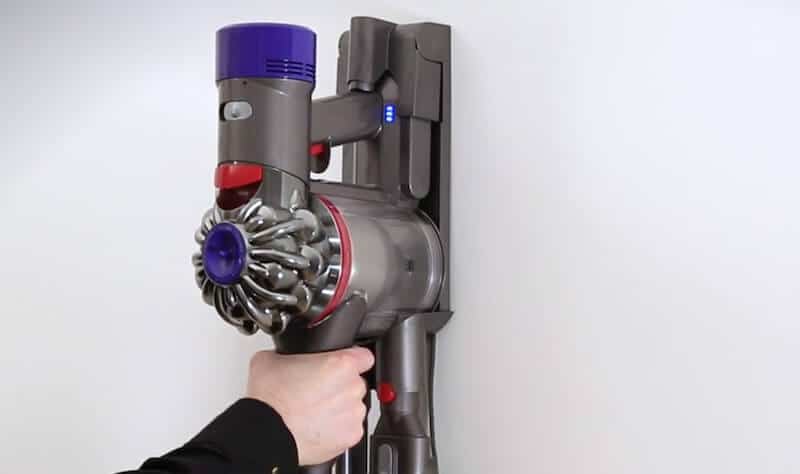
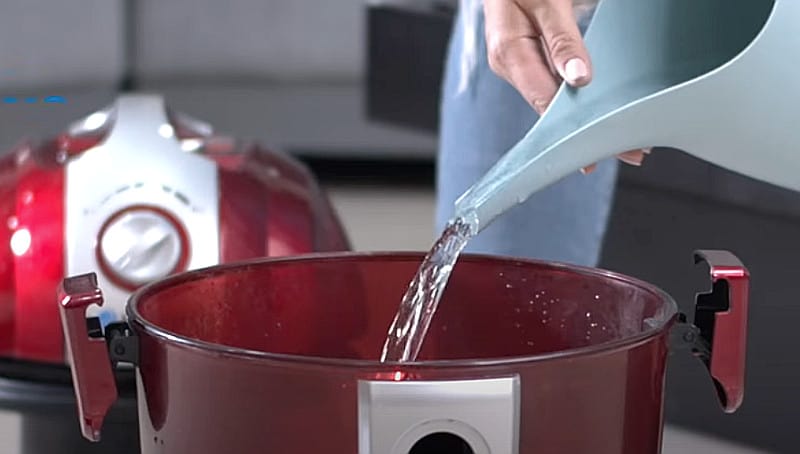
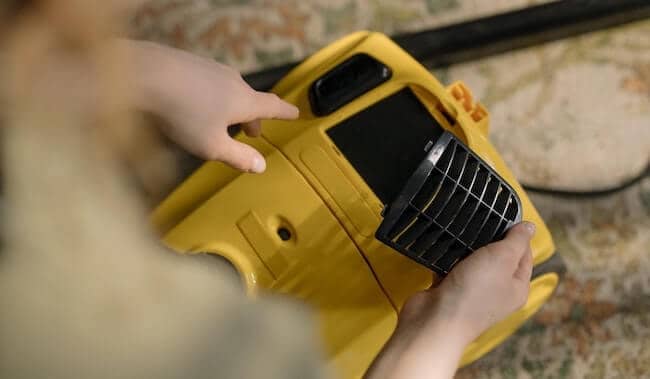
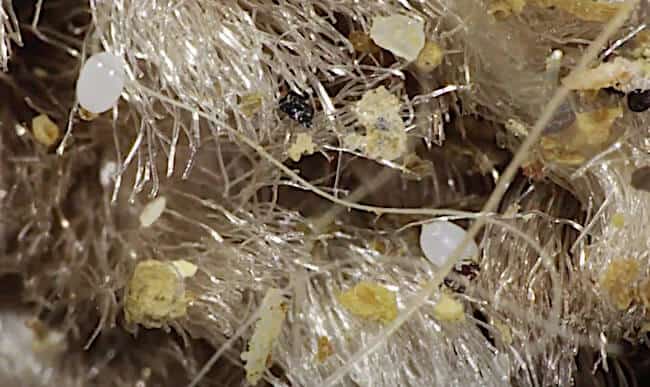
Using a vacuum to tackle such critters can be effective if you’re quick to clean out your machine afterwards. A preventive tip from my experience is to place the vacuum bag inside a sealed plastic bag, before throwing it away.
I’ve had the unfortunate experience of dealing with these persistent pests in one of our client’s homes. We thought we had sucked up all the bed bugs using the vacuum cleaner, only to find out a few days later that they had survived by nesting in the vacuum itself. Our lesson was clear: it’s vital to perform a thorough clean-up of your equipment immediately after tackling a bed bug infestation. Bagging and sealing the vacuum bag, as suggested by Niven, is indeed a good practice, but I’d go so far as to recommend considering the use of a vacuum cleaner with a bagless system where you can dispose of the bugs efficiently and then sanitize the vacuum compartment.
My experience lines up with yours, Vanya. We’ve dealt with everything, from roaches to bedbugs, and vacuuming just won’t cut the muster unless you intend on sanitizing the vacuum afterwards. Burglars of your peaceful night’s sleep, those bedbugs are a sneaky bunch and need methodical elimination protocols!
Fedora, may I say your experience resonates with my daily bed bug battles. The vacuum cleaner turned bed bug eviction unit is indeed a sly sorcerer’s apprentice, merely relocating the rascals, unless you scorch it clean afterwards!
My years of dealing with these pests have taught me that regular cleaning and maintenance of your vacuum is a non-negotiable task if you want to get on top of a bed bug infestation efficiently.
Even after thorough vacuuming, I advise using diatomaceous earth in nooks and crannies – its microscopic sharp edges are lethal to these critters.
I agree with Xanthe’s advice about using diatomaceous earth, it works excellently for post-vacuum treatment. A small tip I want to add is to ensure you get food-grade Diatomaceous Earth because it has smaller particles which makes it safer for use around homes. Also, remember not to breathe it in while sprinkling, even though food-grade variant is less harmful, inhaling it still might irritate the lungs.
As another professional cleaner, I’d just like to underline Janovich’s advice on diatomaceous earth – it’s truly an underrated tool for post-vacuum treatment. In addition, folks shouldn’t forget about the importance of thoroughly washing and drying their bedding at high temperatures to kill any remaining bugs and eggs.
Incidentally, think of bed bugs as unwanted house guests; once they’re in, it’s difficult to get them out. It’s not just about cleaning your vacuum cleaner but encompassing an integrated pest management strategy, which addresses all possible breeding and resting sites.